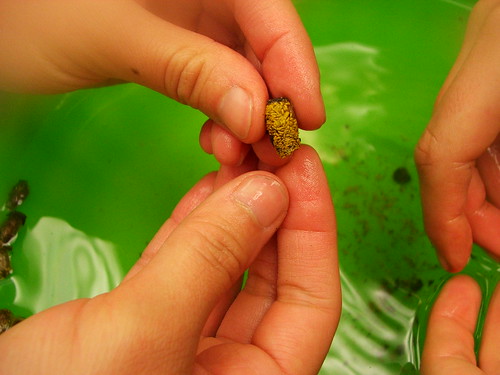
Parasitic mites cluster around a female mason bee cocoon.
According to the Canadian Wildlife Federation, approximately one-third of all human food is prepared from plants which depend on animal pollination. Of all animal pollinators, bees do the large majority of the work.
Most Canadians are familiar with honeybees and bumblebees, but in fact, there are about 800 types of bees in Canada alone. Some live in large colonies, others are solitary or live in small groups. Some build hives in high places, others dig small burrows underground, or nest in hollow twigs.
In recent years, scientists have noticed a marked decline in bee populations. Many farmers in Canada even rent travelling beehives to help pollinate their crops because there aren't enough wild bees around to guarantee a good harvest. There are many theories about why bees are slowly vanishing--some theories include climate change stress, increased pesticide use, widespread monocrop food growing practices (less pollen diversity leads to undernourished and unhealthy bees), and fragmentation and degradation of natural habitats.
Declining bee populations will have a major impact on garden plants, wilderness areas, and food crops. To address these issues, and to raise awareness of the importance of bees to our food and ecosystems, Environmental Youth Alliance has partnered with around 150 volunteer "bee stewards" in the Vancouver area. These volunteers are helping to create bee-friendly habitats in our urban environment. Through the Pollinator's Paradise project, voluteers can take simple steps to support a healthy bee population in the city, such as "beescaping" and monitoring bee activity.
The focus of the Pollinator's Paradise project is the blue orchard mason bee. They are non-aggressive (they don't sting), native to the area, multiply easily, and are extremely effective pollinators (they love apple, cherry, and pear trees). Mason bee stewards throughout the city care for bee "houses," "high rises," or massive "superlodges." They plant flowers and trees preferred by bees ("beescaping"), and reporting on bee activities each month.
At the Food Security Institute, we host two small mason bee houses on the Rooftop Garden, and one "highrise" at the Collingwood Community Garden. On the Rooftop Garden, volunteers planted a border of edible and bee friendly flowers. These included: borage, coneflower, three types of sunflower, marigolds, lavender, calendula, and nasturtiums. These flowers, along with the many flowering fruit and vegetable plants, attracted several different types of bees throughout the spring and summer. Planting flowers in a variety of shapes and colours helps invite an assortment of pollinators as well. We noticed bumblebees preferred borage flowers:
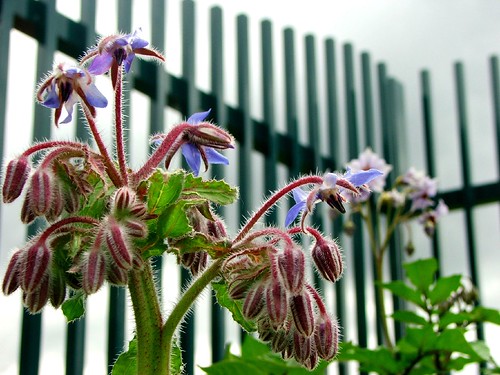
Borage
Many tiny bees flocked to these carrot flowers. Perhaps their small size gives them better access to pollen in the tiny flowerheads:
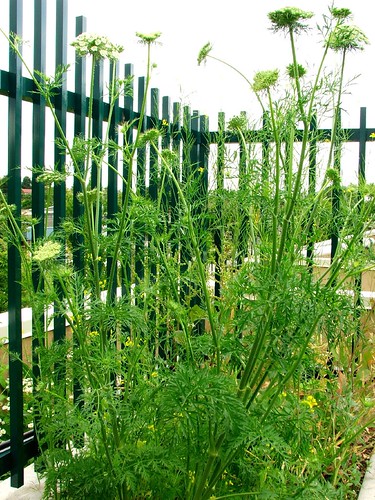
Flowering carrots
For more information, or to volunteer as a bee steward, please visit The Pollinator's Paradise website.
Here are some other photo highlights of our bee activities.
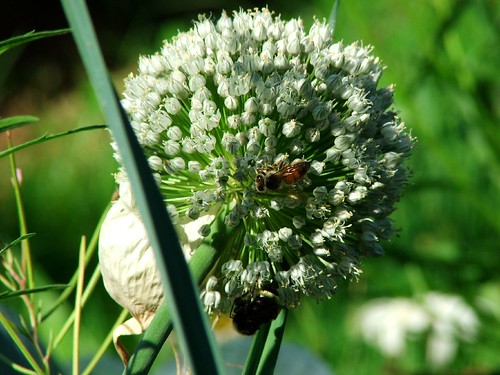
Two types of bee on an onion flower.

Allium flowers were surprisingly popular with the bees.
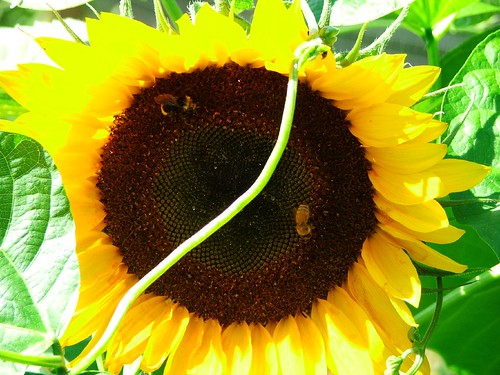
Bees can't see the colour red, so yellow, blue, and purple flowers are good beescaping choices.
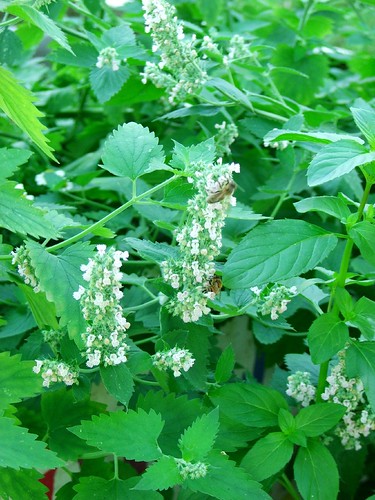
Catnip flowers. We also noticed that honeybees crowded around the spicy purple oregano flowers.
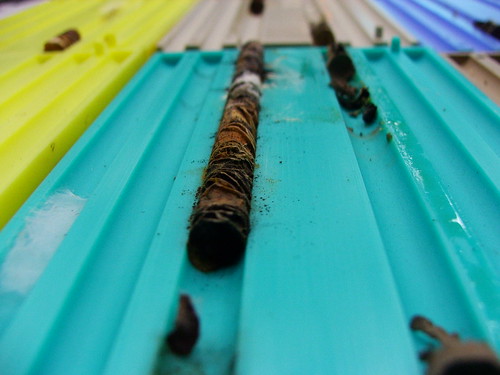
In late fall, mason bee houses should be opened up, cocoons collected, and trays cleaned. We discovered that leafcutter bees had also moved in! They live in similar places as mason bees, and line their homes with bits of leaf as you can see.
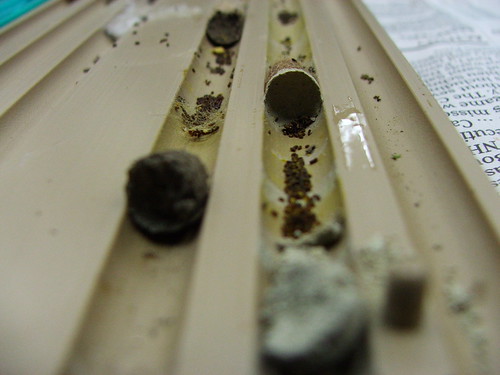
Mason bees are named after their ability to build out of clay and dirt. Here you can see bee-built mud plugs. The small black specks are bee feces.

Here's a somewhat unusual sight. A female mason bee generally prefers long, narrow holes to make cocoons. Here she's built mud chambers, and you can see three cocoons. Wasps have also moved in--you can see the yellow wasp larvae. These wasps are a beneficial type and can be left undisturbed.
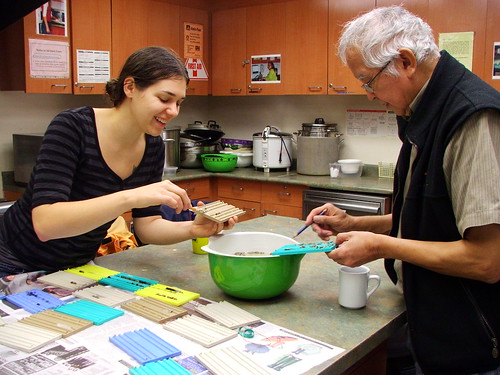
Volunteers Jessica and Dave gently scrape bee cocoons into a cool water bath. We need to wash away any parasitic mites in several changes of water before storing the cocoons in a cool, safe place for the winter. Ideal places include unheated garages or a refrigerator.
In early spring we'll put the clean trays back in the houses, and put the cocoons out to hatch!

1 comment:
Hello,
I would like to know where you bought those trays please.
Thank you,
Karl
Post a Comment